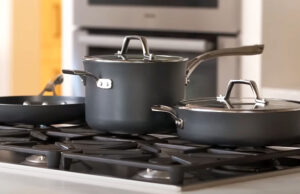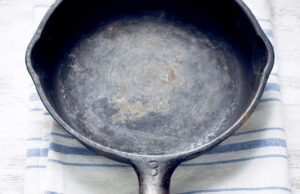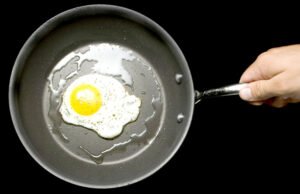As an Amazon Associate, I earn from qualifying purchases at no extra cost to you.
Do Dishwashers Use Hot Water? Discover How They Really Work
I remember standing in my kitchen, staring at a pile of dishes, and wondering why my dishwasher didn’t feel as effective as I hoped. The dishes looked clean, but some spots just wouldn’t disappear. I started thinking about water temperature and whether it really mattered. Could hot water be the secret ingredient for sparkling dishes? And if so, how does the dishwasher manage it? This curiosity led me to dig into the mechanics, tips, and tricks every kitchen owner should know.
Key Takeaways: Dishwashers rely on hot water to break down grease and food particles effectively. Ensuring your home water heater is set to the proper temperature improves results. Using the correct cycle and detergent enhances cleaning. Pre-rinsing tough stains helps, but avoid overdoing it. Positioning dishes properly ensures water reaches every corner.
How Dishwashers Heat Water
Most dishwashers are designed to work best with hot water. They either take water directly from your home’s water heater or use built-in heating elements. When you start a cycle, the dishwasher may draw water that’s already warm or raise the temperature itself. This ensures that the detergent dissolves properly and grease loosens quickly. I noticed when I used cold water, the detergent didn’t foam as well, and spots lingered.
Heating water inside the dishwasher is more common in models with energy-saving features. The element can reach temperatures above 140°F, which is usually enough to sanitize and remove stubborn stains. Some people worry about energy costs, but heating water inside can be more efficient than running the tap hot. I tried it once on my weekend dishes, and the results were noticeably cleaner.
Tip: If your dishwasher doesn’t heat water well, check the heating element or water inlet valve. Small issues can reduce water temperature and cleaning power. I once had a slight buildup on the element, and after cleaning, my dishes came out sparkling again.
Remember, hot water also helps with drying. Steam created during the cycle reduces leftover water spots. It’s a simple trick that many don’t realize.
- Dishwashers use either home hot water or internal heating elements
- Proper temperature ensures detergent works and grease loosens
- Steam aids in drying and prevents spots
Why Hot Water Improves Cleaning
Hot water makes a huge difference when it comes to cleaning. It dissolves fats and oils that cold water struggles with. I remember trying a cycle with leftover pizza grease once, and cold water left a sticky film. The next day, I used hot water, and it came off effortlessly.
Detergent also reacts better with hot water. It activates enzymes faster, which means stains break down efficiently. Think about that stubborn spaghetti sauce or baked-on cheese—it literally melts away with the right temperature. A friend told me she always pre-heats her water just slightly because her dishwasher doesn’t heat effectively, and it transformed her cleaning results.
Hot water also helps sanitize. Germs and bacteria die at higher temperatures, giving you not just clean dishes but safer ones. It’s one of those small details that make a kitchen feel fresh and hygienic. If you have kids or elderly family members, this is especially important.
Quick tip: Run a hot water tap in the sink before starting the dishwasher to ensure it begins with warm water. It’s a tiny habit that improves performance.
- Hot water dissolves grease and fats faster
- Detergent activates better, tackling tough stains
- Higher temperatures help sanitize and reduce germs
How to Check Your Dishwasher’s Water Temperature
Many people don’t realize their dishwasher might not be getting enough heat. I once noticed my plates were cloudy and assumed it was detergent. Later, I measured the water temperature and found it too low. Checking it can be surprisingly easy. Use a thermometer in a cup or run a cycle with an empty dishwasher to test water heat.
Water entering the dishwasher should ideally be around 120°F–140°F. If it’s below that, your dishwasher might struggle. My old water heater was set too low, and simply raising it improved cleaning dramatically. Some newer dishwashers allow you to adjust temperature settings internally, which is handy if your home water is inconsistent.
Don’t forget to inspect the heating element. Over time, limescale can reduce efficiency. I soaked mine in vinegar once, and it restored proper heating in no time. Another tip is ensuring your home’s water heater works properly. A partially malfunctioning heater often means lukewarm water, which leaves spots behind.
- Ideal dishwasher water temperature: 120°F–140°F
- Heating element and home water heater affect performance
- Measuring water temperature can pinpoint cleaning issues
The Role of Detergent With Hot Water
Detergent works best when water is hot. Cold water can leave soap residue or fail to break down oils. I once ran a cycle with cold water and noticed a white film on glasses. Switching to hot water solved it immediately. Some detergents are labeled “cold water safe,” but hot water always enhances their power.
Enzyme-based detergents are sensitive to temperature. They dissolve faster and tackle proteins like egg or cheese only when water is warm enough. This was a game-changer for my breakfast cleanup, which often included sticky pans and oatmeal bowls. Proper detergent combined with hot water is a match made in dishwashing heaven.
Also, detergent placement matters. Make sure the cup isn’t blocked by large plates, and avoid overfilling it. Hot water distributes the detergent evenly, reaching every dish. I’ve noticed small bowls or cups sometimes don’t get clean if water can’t circulate properly, even with hot water.
- Hot water ensures detergent dissolves completely
- Enzyme-based detergents require warmth to work
- Proper placement helps water and detergent reach every dish
Pre-Rinsing and Dish Positioning
Even with hot water, dirty dishes need the right placement. I used to stack bowls awkwardly, thinking the dishwasher’s power could handle it. Big mistake. Hot water flows best when dishes aren’t blocking spray arms. I started spacing items apart, and everything came out spotless.
Pre-rinsing can be useful for very tough stains but isn’t always necessary. Hot water helps break down food particles on its own. I usually scrape leftovers into the trash, but I skip full rinses. This saves water and ensures detergents work better.
Watch out for delicate items. Glasses and plastic can warp if water is too hot, so it’s about balance. I separate these items on the top rack and heavier, greasier dishes on the bottom. It’s a small habit that prevents accidents and improves cleaning.
- Proper dish placement ensures water reaches all surfaces
- Pre-rinsing helps with stubborn stains but isn’t mandatory
- Separate delicate items to avoid heat damage
Maintenance Tips to Maximize Hot Water Efficiency
Keeping your dishwasher in shape affects how well it uses hot water. I learned this the hard way when a clogged filter reduced water circulation. Cleaning filters regularly prevents this problem. Small maintenance routines go a long way.
Spray arms need attention too. Mineral deposits can block holes and reduce pressure. I soaked mine in vinegar once a month, and the difference was clear. Water flow improved, dishes got cleaner, and energy wasn’t wasted trying to heat stagnant water.
Check seals and hoses for leaks. Hot water loses effectiveness if it escapes before reaching dishes. I once had a small leak under my sink that made cycles less effective, and fixing it brought back my sparkling plates. Regular maintenance is a small investment for big results.
- Clean filters and spray arms regularly
- Soak elements to remove mineral buildup
- Inspect hoses and seals to prevent heat loss
Final Thoughts
Hot water is the secret ingredient many overlook. It enhances detergent, loosens grease, and ensures sanitation. With proper maintenance, correct dish placement, and attention to temperature, your dishwasher can perform like new. Small adjustments like running the tap before a cycle or checking the heating element make a noticeable difference. Once you understand how hot water interacts with your dishwasher, cleaning becomes effortless, efficient, and even a little satisfying.
| Feature | Recommended Practice | Tip/Note |
|---|---|---|
| Water Temperature | 120°F–140°F | Pre-run hot tap to ensure warm start |
| Detergent Type | Enzyme-based for tough stains | Hot water boosts effectiveness |
| Dish Placement | Space items, heavier on bottom | Avoid blocking spray arms |
| Pre-Rinsing | Optional, scrape solids | Hot water often suffices |
| Heating Element | Inspect monthly | Soak in vinegar for limescale |
| Filter & Spray Arms | Clean regularly | Prevents clogs and maintains pressure |
| Glasses & Plastics | Top rack, careful with temperature | Prevent warping |
| Maintenance Frequency | Monthly | Small routines improve efficiency |
Frequently Asked Questions (FAQs)
Is it necessary to use hot water in dishwashers?
Yes, using hot water is necessary for most dishwashers to clean effectively. Hot water dissolves grease and food residues faster than cold water. It also activates detergents, especially enzyme-based ones, which break down proteins, fats, and starches. Without hot water, stains may remain, detergent might not dissolve properly, and dishes can appear cloudy. Running a cycle with warm water ensures sanitation, removes bacteria, and enhances drying. Even a small difference in temperature can change results dramatically, so checking your home’s water heater or dishwasher settings is worth it.
Can cold water be used in dishwashers?
Cold water can be used, but results are often weaker. Some detergents are designed for cold water, yet greasy or baked-on food may remain. Cold water reduces enzyme activity, leaving residues behind. For instance, I tried cold water on leftover spaghetti, and the sauce barely loosened. Hot water cycles perform better, clean more efficiently, and sanitize. If energy savings are a priority, you can use eco-cycles, but remember the trade-off: less heat may mean more scrubbing later.
Do I need to adjust my water heater for dishwasher use?
Adjusting your water heater can help if the dishwasher isn’t cleaning properly. The ideal range is 120°F–140°F. I once had dishes come out sticky because my heater was set too low. Raising it slightly solved the issue instantly. This adjustment ensures hot water enters the dishwasher from the start, making detergent work better and removing grease. Always check the manufacturer’s recommendation for your model. Small tweaks here save time and prevent unnecessary pre-rinsing.
Is it safe to rely on the dishwasher’s heating element?
Yes, most modern dishwashers safely rely on built-in heating elements. These elements reach high enough temperatures to clean and sanitize without affecting dishes. However, mineral buildup can reduce efficiency. I found mine was coated with limescale, and after cleaning, hot water circulation improved. Make sure you inspect it regularly and avoid wrapping anything around it. Proper maintenance ensures optimal heating and longer dishwasher life.
Can I improve cleaning by pre-rinsing dishes?
Pre-rinsing helps with very stubborn food, but isn’t always needed. Hot water cycles usually handle small residues on their own. I typically scrape plates into the trash and skip rinsing, which saves water and improves detergent performance. Too much pre-rinsing can reduce cleaning efficiency because detergents work better with some residue present. Consider pre-rinsing only for baked-on sauces or sticky foods. Proper placement and spacing often matter more than rinsing itself.
Do I need special detergent for hot water cycles?
Not always, but enzyme-based detergents work best with hot water. Regular detergent may still clean, but hot water enhances performance. I noticed spaghetti sauce came off completely only when using enzyme detergents with a warm cycle. Some detergents are labeled for cold water, yet they rarely match hot water efficiency. Choosing the right detergent and pairing it with hot water ensures sparkling dishes. Always follow the manufacturer’s instructions for best results.
Is it okay to run the dishwasher at lower temperatures for energy savings?
Yes, eco-cycles or lower temperatures save energy, but cleaning may be less effective. I tried a low-temperature cycle, and oily pans weren’t spotless. Hot water improves detergent action, dissolves fats, and sanitizes. If energy use is a priority, combine a lower temperature cycle with proper dish placement and scraping. Some delicate items also benefit from cooler cycles, so it’s about balancing results and efficiency.
Can I tell if my dishwasher isn’t getting hot water?
Yes, signs include cloudy dishes, soap residue, or leftover grease. I once had a cycle where glasses appeared streaky, indicating lukewarm water. Testing with a thermometer during a cycle helps. Also, check the heating element, water inlet, and home water heater. Regular maintenance prevents these issues and ensures your dishwasher reaches ideal temperatures. Proper heat improves cleaning, sanitizing, and drying, making it noticeable with every cycle.




